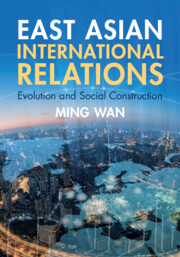Book contents
- East Asian International Relations
- East Asian International Relations
- Copyright page
- Dedication
- Contents
- Figures
- Maps
- Tables
- Preface
- Acknowledgments
- Abbreviations
- Part I Introduction and Theory
- Part II Historical Background
- 3 Histories of East Asian International Relations
- 4 Modern Imperialism in East Asia
- Part III East Asia since 1945
- References
- Index
4 - Modern Imperialism in East Asia
from Part II - Historical Background
Published online by Cambridge University Press: aN Invalid Date NaN
- East Asian International Relations
- East Asian International Relations
- Copyright page
- Dedication
- Contents
- Figures
- Maps
- Tables
- Preface
- Acknowledgments
- Abbreviations
- Part I Introduction and Theory
- Part II Historical Background
- 3 Histories of East Asian International Relations
- 4 Modern Imperialism in East Asia
- Part III East Asia since 1945
- References
- Index
Summary
Chapter 4 starts with a discussion of imperialism constructed as a fact and as theory. It highlights the major disruptions in East Asian and world history. The prevailing realist, liberal institutionalist, and constructivist theories are not scaled to explain such dramatic transformations of East Asia by Western imperialism. Rather, a historical sociological approach anchored on evolutionary theory is a better fit. Western domination based on the rise of the West in terms of economic, technological, and military power took several centuries to complete. Some East Asian empires were also expanding after 1500. A turning point was Britain’s defeat of China in the Opium War of 1839–1842. After that, East Asian nations engaged earnestly in reform. Some, like Japan, succeeded, while others, like China, failed, resulting in a great divergence among Asian countries. To some extent, much of East Asia still lives in the shadow of that imperialist past.
Keywords
- Type
- Chapter
- Information
- East Asian International RelationsEvolution and Social Construction, pp. 89 - 122Publisher: Cambridge University PressPrint publication year: 2024

